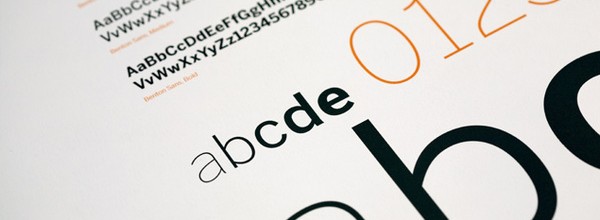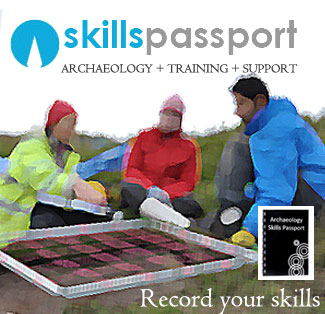
Archaeologists use data compiled from research, field work and scientific or specialist analysis to document and report on archaeological sites, surveys or research. The standards and guidance for archaeological documentation can be dependant on both the target audience and the body who required the report or publication, however the basic outline will remain the same. This section is designed to provide archaeologists with the framework technical advice on archaeological documentation methodologies.
29.1 Writing a report or journal publication
PRINCIPLE: Writing a standard report or journal publication
Novice – Can contribute to the process of creation but is unable to complete a section without supervision.
Competent – Is able to contribute to the process of creating a report or publication, though requires supervision to complete – can be given sections to complete by themselves.
Proficient – Is able to envisage the completed report or publication with confidence and can assemble the required elements to create a document or article with accompanying figures and images that can be submitted for editing.
Professional Tips: First lay out the main elements you will need, in some cases, this will require discussion with specialists, who may be providing elements to your report or illustrators who are providing the figures – often the illustrations are dependant on the text and the text on the illustrations – so be prepared to revise. The photographs should be used to enhance the report and must be relevant and in the right location within the text, which is also true of the illustrative figures.
The basic elements of a report are as follows
- Summary
- Introduction
- Objectives
- Methodology
- Results
- Specialist Reports
- Conclusions
- Appendices
- Bibliography
1. First create a short summary/abstract that prepares the reader for the content to follow ( remember this is not a work of fiction, where the ending must remain a secret until the end )
2. Describe the geographic boundaries of the site including a description of the area’s physical environment and a historical background – either of the site and/or other archaeological works that have taken place. If previous excavations have occurred at the site, include this and describe what they found.
3. Following on from the site location and history, you will have already carried out an archive assessment or desk based assessment (DBA) and the details of the map regression, oral histories, photographs and records will help further place the site both geographically and temporally into context.
4. Define the research objectives and try to articulate the project goals including the reason for the project, the research questions to be addressed, and the final desired outcome.
5. Describe how you carried out each element of the project – If you excavated trenches? Were they hand dug or machine, how deep did you decide to go (until natural? Or until you hit significant archaeology) Did you do the work stratigraphically, how did you decide where to excavate OR If you were surveying a large area, how did you record the features and sites? How did you decide what features or sites to record? What photographic method did you use? Include methods of documentation for features and artefacts uncovered through the use of remote sensing, walkover surveys, and excavations. Note problems with bad weather, site access and visibility.
6. Present the results. The report must summarise the site data. Use figures, charts, photographs and tables to present the information in a way that is understandable, self supporting and in the right location within the report. Ensure that every context. site or element is presented and the relevance and significance is proposed.
7. Provide details of the analysis of the artefacts and samples taken. The report must list the artefacts from the site and any scientific or specialist analysis includes: studying the artefact types and distribution across the site; dating artefacts using dating methods, faunal analysis; environmental samples; and ceramic reports.
8. The report must then evaluate the project in terms of the achieving the objectives of the project and create a synthetic discussion of the whole report, that results in a conclusion based on the data collected and collated to date, as well as how this fits into a wider picture. Provide recommendations for ongoing research.
9. Appendices for the report must list all photographs, contexts, sites, features, samples or artefacts recovered to provide a cross reference of data.
10. The report can now conclude with a list of all sources (including maps, journals and books) consulted during the project in the form of a bibliography. To decide upon the format, it is best to confirm this with the person or organisation that has required the report.
Finally – remember that the report should be made available to the widest number of people, so it can be referenced and used in turn. Within teh UK this will mean deposition with the Local County Historic Environment Record and the Local Records Office as well as electronically with OASIS.
Read BAJR Guide 23: Recording, Report, and other templates for further guidance
OASIS: Online AccesS to the Index of archaeological investigationS
The OASIS project brings together a number of strategic partners: the Archaeology Data Service, the Archaeological Investigations Project (AIP) of Bournemouth University, the Archaeology Commissions Section of English Heritage, the National Monuments Record of English Heritage, Historic Scotland and the Royal Commission on the Ancient and Historical Monuments of Scotland under the umbrella of the University of York
Publishing your Research in Archaeology Journals
Professional Tip: To a certain degree the principals are the same, however, you should ensure rigorous checking of details, data and bibliographic references. Using standard formatting for academic papers and journals shows that you understand the requirements of the academic community and this in itself helps boost your credibility.
Using unusual or distinctive formatting and fonts, can suggest you have not adequately prepared your work and not examined the particular requirements of the publication. Each will have it’s own rules about style and format, including page sizes, image sizes and types of image formats (tif, jpg, etc) that are accepted. Consider reading and rereading the requirements and laying out a template, to ensure you match what they want, rather than what you send.
The indentations, the line spacing, the font and the numbering of sections must all comply with the requirements that will be available to view and download from the publisher. a few examples are provided below, to allow you to see the commonality and differences.
- PLOSone format guidelines
- Antiquity contributions
- Editorial, Procedural and Stylistic Policies of the Plains Anthropologist
The following film (48mins) is an excellent grounding in what publishers are looking for – and
29.2 Writing a press release
PRINCIPLE: To prepare and produce a short article suitable for local or national press agencies
Novice – Can contribute to the process of creation but is unable to complete without supervision.
Competent – Is able to contribute to the process of creating a press release, though requires supervision to complete the full article.
Proficient – Is able to prepare a full press release in a format that meets the standard requirements of this format. Can collate the information and produce with little external input a press ready article that requires only final proof editing before provision to a journalist.
Professional Tips: Like report writing, a press release follows a standard format, ensure you provide enough information to allow the journalist to quickly make sense of what you are describing, ensure you provide images (and links to high resolution images ) with captions and credits in a separate document. Ensure you provide quotes and additional contact details
1. HEADLINE It should be brief, clear and to the point: an ultra-compact version of the press release’s key point. PR professionals recommend writing your headline after you have written the release, as you will be better able to think of a suitable headline.
2. Write the name of the Company, the person who wrote the release, in addition, start with the date (including any embargo) and location/city in which the press release originates. The city may be omitted if it will be confusing.
3. The lead, or first sentence, should grab the reader and say concisely what is happening and with enough to convince the reader to continue to the rest of the copy.
4. The press release body copy should be compact. Avoid using very long sentences and paragraphs. Avoid repetition and overuse of fancy language and jargon. Strive for simplicity, and no wasted words. The first paragraph (two to three sentences) should sum up the press release, and the additional content must elaborate it.
5. Deal with facts––events, sites, artefacts, people, dates, projects. Use this simple method for writing an effective press release by asking yourself : Who, what, when, where, why, and how?
6. Include information about the organisation. When a journalist picks up your press release for a story, he or she will mention the organisation in the news article. Journalists will get the required nformation from this section. The title for this section should be—–About XX name of organisation XX .
7. Add contact information. If your press release is newsworthy, journalists may want more information or would like to interview key people associated with it so provide names, tel, email and contact details for these people – and what extra they can provide.
8. If possible, include a link to an online copy of the same release
9. Finally end your release with ### (hash) symbols, centred directly underneath the last line of the release. This is a journalistic standard.
How to Format a Press Release (PRweb)
Further Sources: |
|
Cite this articleReport writing and publication. Archaeology Skills. February 2013, from http://www.archaeologyskills.co.uk/report-writing-and-publication |
|




